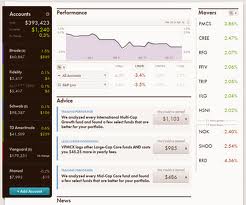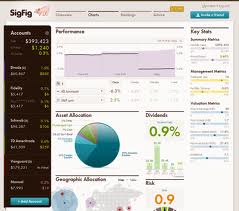SigFig has been lurking on the investment periphery for a few months and the creators have decided to finally unveil their product this week. The creators of Wikinvest have decided to upgrade their product and create SigFig. The premise seems to be that users wanted a cleaner, more professional look and additional financial advice.
I received an email telling me that Wikinvest was now SigFig and that all of my information had been rolled into SigFig’s system. Various assurances accompanied the email to help me feel more secure, however it is a bit disconcerting to know that they could simply move all of my accounts, passwords, and logons to a new website without my permission. It may very well be that this rollover was noted in their Terms & Conditions, however I do not recall reading it there. In the end, I was happy with the bank level security and read-only access provided by Wikinvest and the SigFig is configured the same way.

The first thing you notice when transferring over from Wikinvest is that SigFig just looks a lot nicer.The same charts and graphs exist but SigFig is easier to read and better organized. The other thing you notice is that the market research and “money school” sections are gone.SigFig wants you to focus on their customized advice that points you toward improving your portfolio.
I was frankly not that impressed with their advice. I was expecting something that would recommend a better asset mix or something that would help me improve my portfolio on some level. I got that but the advice was simply that I should move my money out of my company’s 401(k) and into an IRA. Then it provided links to three company’s that would be glad to help.
SigFig takes a referral fee if I sign up. There’s nothing wrong with what they recommend, but the tour of the site had me excited about the possibility of something more akin to MarketRiders or Wealthfront.
In the end, I like the new look and feel, but I miss some of the discussion and analysis that

Wikinvest was a nice tracking tool and SigFig definitely improves on Wikinvest. As an aggregator SigFig works well.
